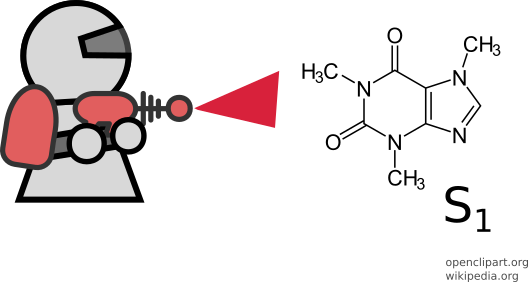
I totally forgot to write something about this paper. But before getting to that, an anecdote: Last month some friends and I were sitting out in a hallway of one of the hotels hosting the ACS national meeting. We were definitely looking tired. A guy, who seemed to be experienced in hiring, started talking to us about not giving up and practice more on elevator conversations: your ability to ultra-summarize your work to others. He did spend some time sharing his experiences with us. We must’ve looked really tired (especially me)…
So here is that elevator report for you (web visitor): We got a paper published on estimating the absorption spectrum of excited-states, here. You select an excited state (based on its symmetry, transition energy and oscillator strength from the ground state), and the program outputs its absorption spectrum (in terms of oscillator strengths).
With some extra details, you run a regular linear-response “TDDFT” calculation (starting from the ground-state orbitals), and choose the state. The algorithm perturbs the orbitals using the transition vectors of the chosen state, and then runs the linear-response calculations once again. At the end it prints out the oscillator strengths for transitions starting from the chosen excited-state. The tests I’ve run indicate the printed results are ok against experimental data. The paper is backed by a theory based on quantum mechanics (exact in principle), and the approximations are improvable.
If somebody paid me for an honest brief review of this paper, I’d say: Incomprehensible, intricate, complicated, but seems useful. I love it, but I understand the formalism is hard, but the implementation is quite simple. Applications to organic semiconductors are coming

